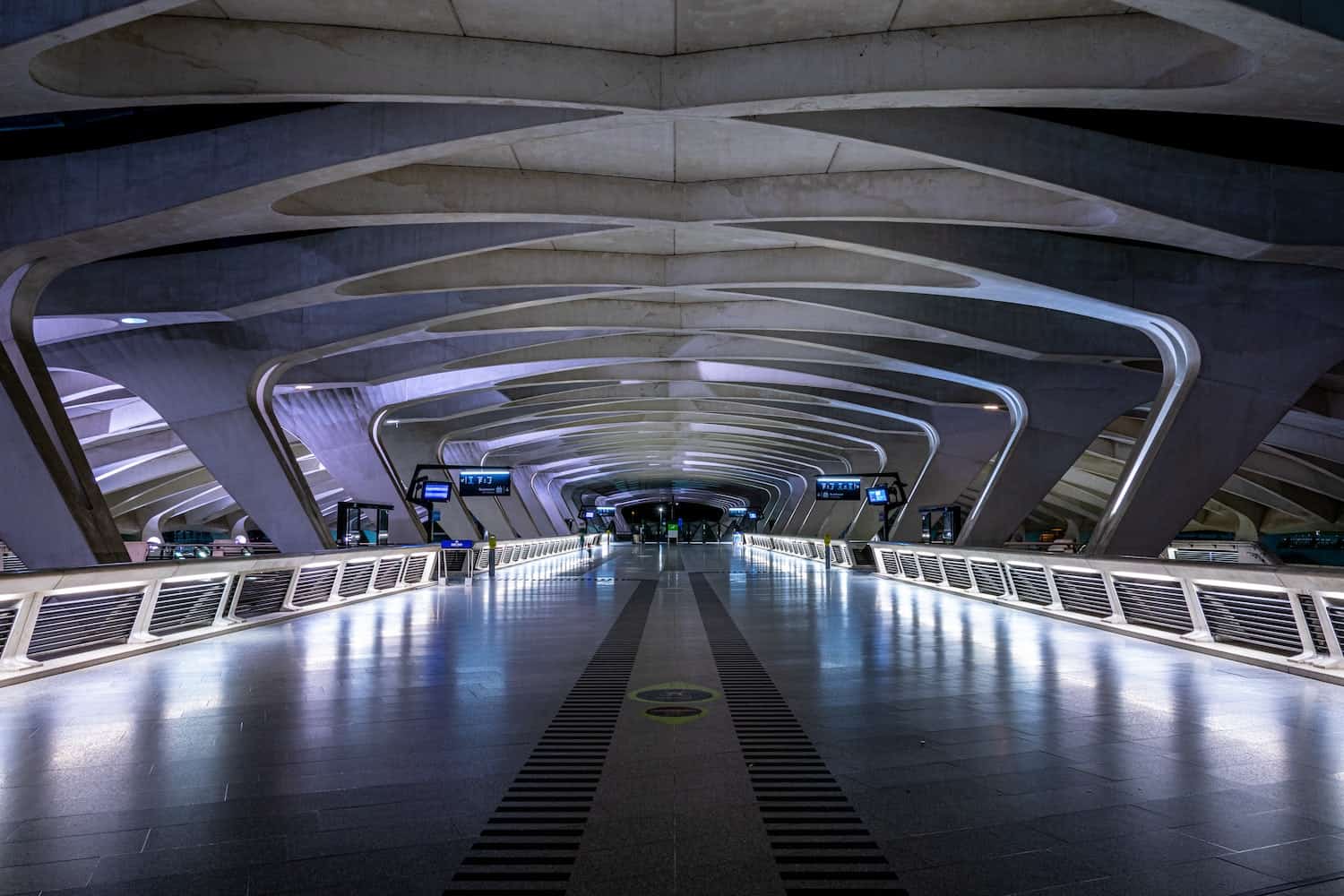We’ve all had the experience. We’re trying to make a tight connection. After waiting impatiently to get out of the plane we enter the concourse only to discover our connecting flight is half a mile away in a different concourse. Now we have to run, dragging our luggage behind us. What the heck is going on? Are they trying to screw with us? You may be asking yourself, “Why is my flight always at the farthest gate?”
Even in the best of circumstances it seems like our flight is never near the front of the airport. They have gates there. We can see them. But our flights are never going out of those gates. Why?
Wingspans
It has to do with the popularity of where we’re going. Popular destinations require bigger jets, and bigger jets have wider wingspans. Jets with wider wingspans require gates that are farther apart, and those gates are not near the main concourse.
Most airports grew organically over time. They expanded outward from the original airport core as jets increased in size. Consequently, the gates with the largest capacity are those farthest out from the core.
Large capacity jets are typically those flying between major airline hubs. (See the related article on airline hubs.) Such flights usually receive connecting passengers arriving from smaller cities, and flights from smaller cities usually arrive in smaller jets. Those jets will typically be gated at the older, smaller gates nearer the front of the airport. That explains why connecting flights are often not near each other, and why you sometimes find yourself running through the airport to make a connection.
The Value of a Circle
Airports that were first established decades ago are often designed with arm-and-loop configurations, long concourses with gates on either side that culminate in circular terminals. Those circular terminals allow for jets with wider wings spans. Accordingly, the flights with the largest number of passengers are gated as far away as possible from the main concourse. If it seems like you have to walk a long way to get to your gate every time you fly, it’s probably because you’re flying to popular destinations.
Newer airports have taken the arm-and-loop configuration even further, disconnecting the loop from the main airport altogether. These circular satellite terminals allow large jets to be parked around the entire circumference. Passenger access the terminal via underground passageways or by shuttles.
No Space at Home
In addition, the distance between connecting flights can be impacted by airport traffic. When traffic is heavy, airlines have to direct incoming flights away from dedicated gates in their own concourse to available gates in other concourses. If you’ve ever had the experience of trying to make a tight connection and discovering you are in the wrong concourse far from your connecting flight, which is at the far end of another concourse, that’s why.
Knowing all this will not make it any easier the next time you’re running through an airport with your anxiety level spiking, but at least you’ll know there’s a method to the madness. Popularity has a price, and you are paying it when you fly—just not in the way you might have imagined.
Sources
Bouras, Abdelghani. “The Airport Gate Assignment Problem,” Hindawi, the Scientific World Journal, 6 August 2014, website
Kumar, Prem V. “Multi-Objective Airport Gate Assignment Problem in Planning and Operations, Journal of Advanced Transportation, 18 June 2013, website
“Introduction to Airports Design and Operations,” George Mason University Center for Air Transportation Research, Accessed 23 February 2021, website
Image credit
Farthest possible gate, by Bosco Shots on Unsplash

